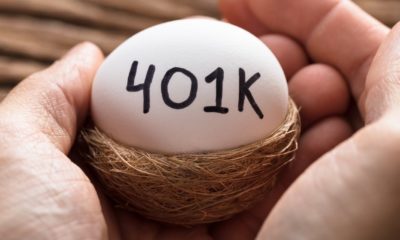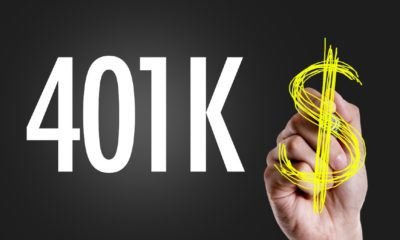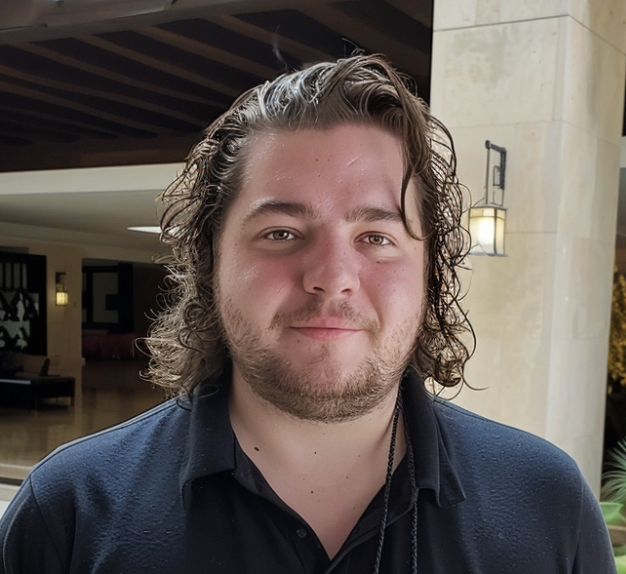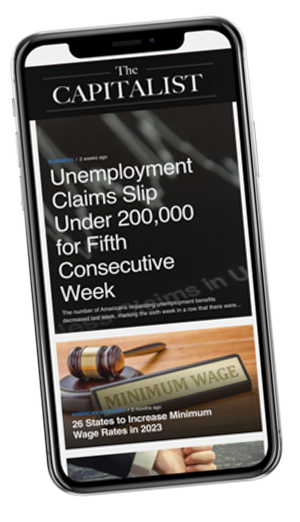bank
Reverse Mortgage: Get Paid While In Retirement

Unless you have been living in the woods for the last few decades, you have undoubtedly heard of a mortgage.
If you happen to be unfamiliar with what a mortgage is, we’ll tell you.
What a Mortgage Is
A mortgage is a loan you get from your bank or another lender to purchase a home.
Once you make a deal for the mortgage, you start making payments every month.
Naturally, the goal is never to be late, miss a payment, or pay less than what is due.
As you pay off the loan, you get what is called equity.
Equity is the amount of your home that you now own after making your mortgage payments.
As you continue to pay off your mortgage loan, the amount of equity you have increases.
Here is a chart illustrating how a regular mortgage works about the debt ( the amount you borrowed) and the equity (the amount you have paid off):

Now, In Reverse
For those of you who did not know, there is such a thing as a reverse mortgage.
The reverse mortgage is a little tricky so we'll go into a detailed explanation.
Hopefully after reading this, you will have gained a better understanding of what a reverse mortgage is, how to get one, and be aware of the risks involved.
[ms_divider style=”normal” align=”left” width=”100%” margin_top=”30″ margin_bottom=”30″ border_size=”5″ border_color=”#f2f2f2″ icon=”” class=”” id=””][/ms_divider]
[ms_featurebox style=”4″ title_font_size=”18″ title_color=”#2b2b2b” icon_circle=”no” icon_size=”46″ title=”Recommended Link” icon=”” alignment=”left” icon_animation_type=”” icon_color=”” icon_background_color=”” icon_border_color=”” icon_border_width=”0″ flip_icon=”none” spinning_icon=”no” icon_image=”” icon_image_width=”0″ icon_image_height=”” link_url=”https://offers.thecapitalist.com/p/warrenbuffet/index” link_target=”_blank” link_text=”Click Here To Find Out What It Said…” link_color=”#4885bf” content_color=”” content_box_background_color=”” class=”” id=””]Warren Buffett Just Told His Heirs What He Wants them To Do With His Fortune When He Dies. [/ms_featurebox]
[ms_divider style=”normal” align=”left” width=”100%” margin_top=”30″ margin_bottom=”30″ border_size=”5″ border_color=”#f2f2f2″ icon=”” class=”” id=””][/ms_divider]
What a Reverse Mortgage Is
A reverse mortgage has some similarities to a regular mortgage, but only at certain points.
Here are some of the similarities between a regular mortgage and a reverse mortgage:
- The deal is between you and the bank
- Your home is still involved
- You must still have collateral
- The risk of losing your home still exists
That is about where it ends for similarities between the two.
Now, here is where things get a bit odd.
With a regular mortgage, you pay the bank to get your home.
With a reverse mortgage, the bank pays you.
You are mostly getting another loan, but instead of you paying the lender, the lender is paying you.
There are some things you have to do to stay in good standing, and your equity will drop if you get a reverse mortgage, but we will explain those details a little later.
Popularity of Reverse Mortgages
From 1990-2013, the number of reverse mortgages grew steadily for a while.
1990-2001 saw a gradual rise in the number of reverse mortgages being taken out.
From there, it was large spikes on an annual basis.
The number of reverse mortgages peaked in 2009, falling drastically from there.
The cause of this drop was the housing crisis in 2009.
As of 2013, the number of reverse mortgages crept back up to the level it was at in 2005.
The chart below illustrates the rise and fall of reverse mortgages, spanning the period of 1990-2013:

How a Reverse Mortgage Works
There are several requirements you must meet to be eligible for a reverse mortgage.
Some of these requirements vary depending on where you live, be it country or region.
For example, you have to be at least 62 years old to qualify for a reverse mortgage in the United States.
In Canada; the age is 55.
The Home equity requires the age as it helps in calculating the loan (what you have paid off so far).
Older people will undoubtedly have more equity in their home due to time passage than younger people.
Your home and the equity you have, along with your age, the value of your home, and interest rates, are all used to determine the loan amount you can qualify for.
Typically, the amount you get is a percentage of your home’s value, and it sits at around 50-60% of your home’s current value.
The bank will pay out the loan over time, but there are some things you have to settle first.
Here is what you will have to pay off:
- Your current mortgage
- Settlement costs
- Any legal fees
- Other expenses associated with the reverse mortgage
Here is a chart that shows you an example of a couple that got a reverse mortgage and what comes out of it before it gets to you.
This chart shows other expenses paid by the couple with the loan they had remaining:

The graph is just a simple example of someone who got a reverse mortgage, what had to be paid off, and what this person did with the remainder of the money.
Below is another simulation with a little more detail.
It shows the home value, loan balance, home equity, and line of credit over a 20-year period:

Keep in mind that there is no accounting for variables such as interest rates.
This example chart depicts using constants, which you should know that none of this will stay constant for two decades.
Recap of the Basics
Let’s review what we have learned so far about reverse mortgages, shall we?
A reverse mortgage involves you, the equity of your home, the remainder of your mortgage, your age, the value of your home, and interest rates.
After reaching the required age, you can get a reverse mortgage, whereby the bank gives you a loan, but you make no payments on it.
Instead, your home is used as collateral.
Paying off the mortgage can wait until you sell the home, or you pass away.
The older you are and the more equity you have in your home, the higher the potential amount you will receive.
Also, the value of your home plays a part in determining the amount you receive.
The remainder of your original mortgage, along with any other fees, are deducted from the amount you get loaned to you.
After that, the money is yours to do as you wish.
You can put away for a better retirement, take that vacation you always wanted, or do whatever you like.
Now, here are some other things you should know about reverse mortgages, starting with the two main types.
Types of Reverse Mortgages
Insured- The Federal Housing Administration (FHA) provides insurance for many reverse mortgages.
This protection falls under the HECM, which stands for Home Equity Conversion Mortgage.
What this means is that should the balance of your reverse mortgage exceed the value of your home once it is sold, the loan will be satisfied just with the sale of the home.
There is one provision to this, and it is that the house must sell for at least 95% of the value at the time of the sale.
The 95% value sale is a nice protection to have, as some reverse mortgage balances do exceed the value of the home.
Naturally, if the balance is less than the sale price, the balance is deducted with the remainder shared among any and all heirs to the estate.
Proprietary- The other type of reverse mortgage is called exclusive.
This kind of reverse mortgage is not insured.
No insurance means that if the balance is higher than what the home sells for, the lender can pursue collection of the rest from the heirs or the homeowner if the homeowner is still living.
There are other things to look out for when dealing with proprietary reverse mortgages.
The terms in general for the loan may not be like the conditions that come with an FHA-insured mortgage.
These are not part of FHA-insured loans, so there can be huge variances with the terms.
Please proceed with caution and ensure you fully understand all of the terms if you decide to go with a proprietary reverse mortgage.
Naturally, you still get the choice of a fixed rate or variable rate mortgage.
Research and decide which is right for you.
Documents mention beforehand the repercussions of defaulting on a reverse mortgage.
Now, we will go into further detail on this aspect.
Reverse Mortgage Default
You know that missing or being late on x amount of payments can cause a default on a regular mortgage.
The default can cause you to wonder how you can default on a reverse mortgage when you don’t make any payments on it.
A default on a reverse mortgage can occur by other causes, such as violation of the terms as it relates to the requirements.
Most lenders require the same things for you to be in good standing.
You must keep homeowner’s insurance for your home, for one.
For another, your property taxes must be kept up.
For those of you that live or may live in an HOA (Homeowner’s Association) neighborhood, you likely have fees to pay for that, even if you are not an actual member, providing membership is not compulsory.
For many reverse mortgages, you also have to live in the home for a specified period before selling the property.
Should you violate any of these terms, you could be found in default.
The miss or default can cause you to lose your home.
See? Reverse mortgages carry risks.
You should be aware of these before deciding to get one.
Knowing the risks is advisable, regardless of if you get an insured or proprietary reverse mortgage.
Here are some of the potential hazards associated with a reverse mortgage.
Risks of Reverse Mortgages
Just as with any loan, there are risks involved, awareness of which is good. You should know that:
- Reverse mortgages have higher interest rates
- It is possible to default on a reverse mortgage
- Defaulting will cause you to lose your home
- Proprietary reverse mortgages can cause you to pay extra
To Reverse, or Not to Reverse?
That is the question. You have a lot of thinking to do, along with research to determine if getting a reverse mortgage is right for you, or if you should pursue some other avenue of income.
You have to take into consideration how much you need for retirement, how much you want to spend, and factor that in with how much you could get. Just because you can get a lot more does not mean that you should.
You have to ensure that you understand and can fulfill all of the requirements of the loan to keep you from going into default and losing your home.
If you get an FHA-insured reverse mortgage, you are required to be educated via a course to ensure one understands what they are getting.
Some critics of this program say that the information you get from this course is not exactly enough to truly be considered well-informed.
If this is true, you should do your research or have someone you trust to do the research for you.
You should use as much caution as possible before committing to a reverse mortgage.
There are other avenues to pursue to get the kind of money you would get from a reverse mortgage.
Other Options
If you find you need or just want the amount of money you could get a reverse mortgage without actually getting one, there is only one real way to do it.
That way is to sell your home.
Just like with a reverse mortgage, the remainder of your lease will be deducted, but after that and other fees come out, the leftover money is yours to keep.
Just downsize your living quarters, and you will have a nice bit left for your retirement years.
You could also sell off other assets you may own, such as classic cars, businesses, or other assets if you have accumulated any during your lifetime.
Conclusion
A reverse mortgage is an option for older homeowners to have a nice bit of money for their remaining life.
It can provide you with a comfortable bit of finances to use as you see fit.
Again, please do extensive research to determine if a reverse mortgage is the best decision for you and your life.
When you use a reverse mortgage correctly, it can help you live your dreams, take care of expenses, and have a comfortable, worry-free life.















